库存管理讲义
- 格式:docx
- 大小:246.55 KB
- 文档页数:19
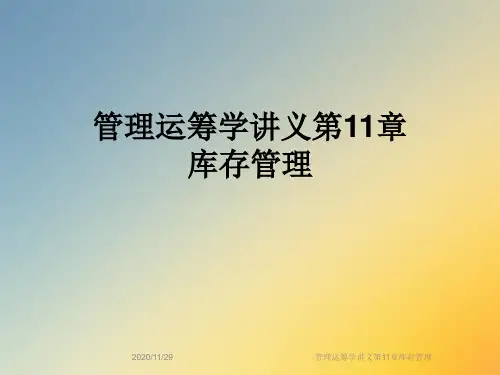
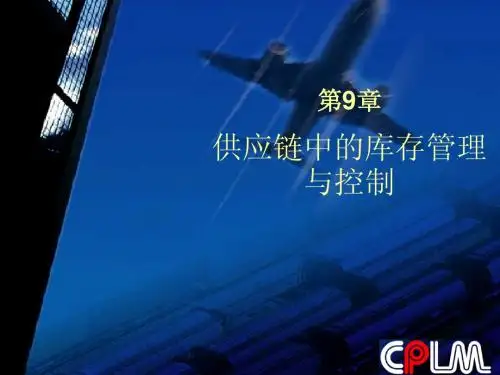
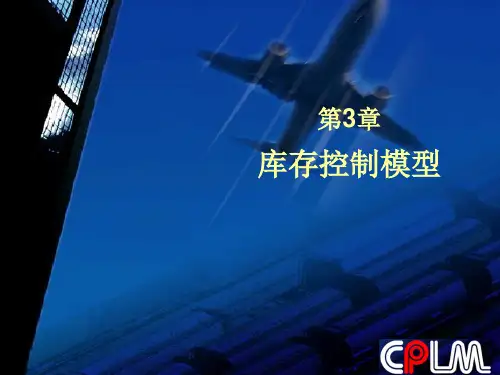
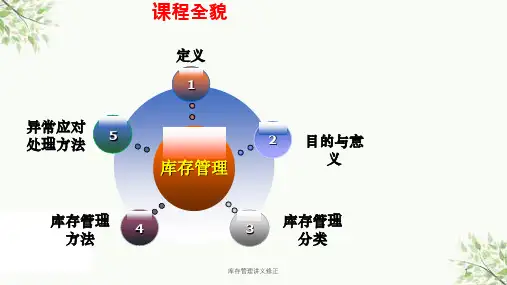
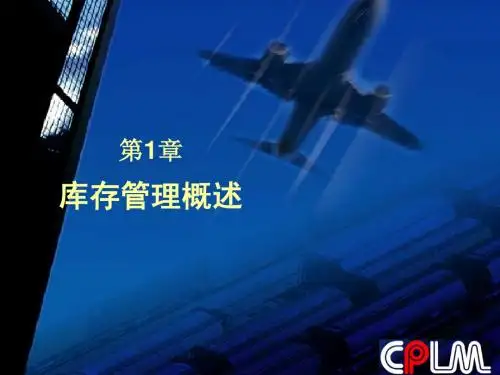
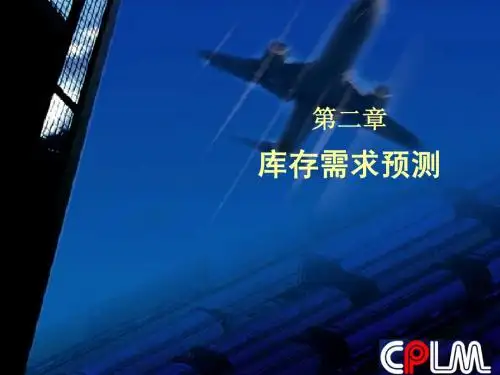
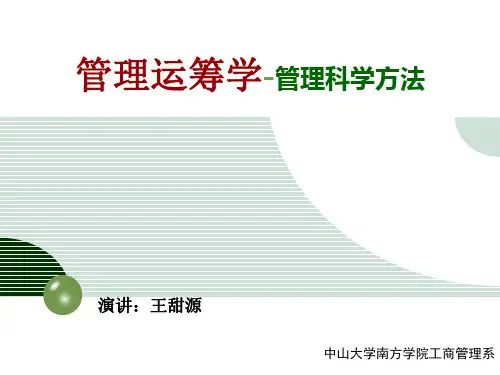
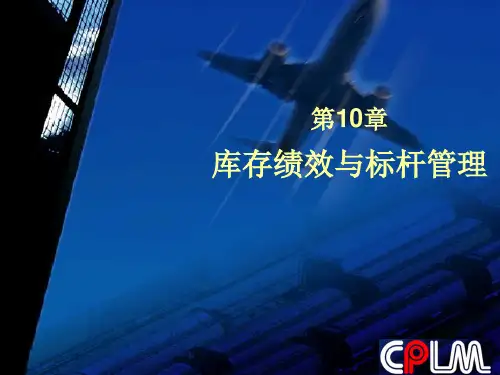
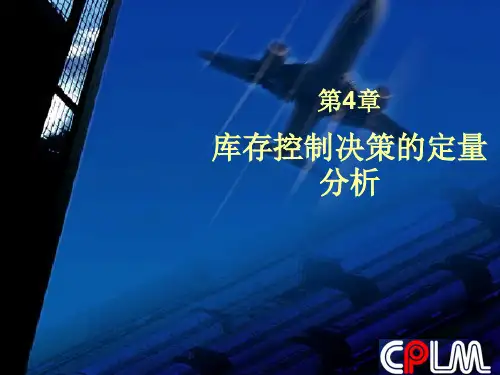
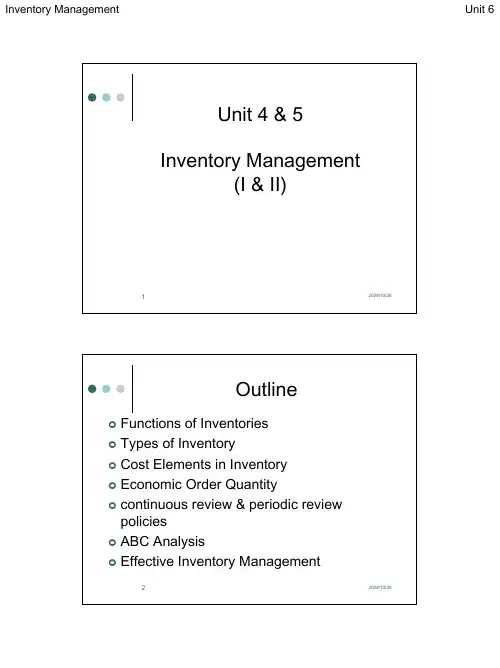
2009/10/281Unit 4 & 5Inventory Management(I & II)2009/10/282Outline|Functions of Inventories|Types of Inventory|Cost Elements in Inventory|Economic Order Quantity|continuous review & periodic reviewpolicies|ABC Analysis|Effective Inventory Management2009/10/283Inventory is an important performancemeasure for a supply chain|In 1998, Dell had 10 days of inventoryand Compaq had 100 days.|When the prices of PC dropped,Compaq was hurt the most ………2009/10/284What is Inventory|Inventory are materials and supplies thata business or institution carries either forsales or to provide inputs or supplies tothe production process. All business andinstitutions require inventories.|they are a substantial part of total assets.2009/10/285Inventory Management|Inventory Management is responsible for planning and controlling inventory from raw material stage to the customer. Since inventory either results from production or supports it, the two cannot be managed separately and, therefore, must be coordinated |Inventory must be considered at each of theplanning levels and is thus part of productionplanning, master production scheduling, andmaterial requirement planning.2009/10/286Role of inventory in the supplychain|Stabilizes the production andworkforce|Supply/Demand uncertainty|Material delivery lead time uncertainty|Speculation (value of item expected toincrease in the future)|Economies of scale in purchasing andtransportation2009/10/287Why Inventory ExistsRate of supply from input processInventoryRate of demandfrom output process 2009/10/288Functions of Inventories|Inventory serves as buffer between:z Supply and demandz Customer demand and finished goodsz Finished goods and componentavailabilityz Requirements for an operation and theoutput from the preceding operationz Parts and materials to begin productionand the suppliers of materials2009/10/289Factors affecting inventorylevel|There are many factors affecting theinventory level and hence the inventory costin a Supply Chain, the following are some ofthe most important ones:zService level zDemand and supply variability zLead time and lead time variability zInformation (demand information)z Supply chain cost2009/10/2810Type of Inventory|Anticipation Inventory|Buffer Inventory|Cycle Inventory|Pipeline Inventory2009/10/2811Anticipation Inventory|Anticipation inventories are built up inanticipation of future demand.|For example, they are created ahead of apeak selling season, a promotion program,vacation shutdown, or possibly the threat ofa strike.|They are built up to help level productionand to reduce the costs of changing production rates 2009/10/2812Buffer Inventory (Safety Stock)|Inventory is held to cover randomunpredictable fluctuations in supply anddemand or lead time.|If demand or lead time is greater thanforecast, a stockout will occur.|Safety stock is carried to protect againstthis possibility. Its purpose is to preventdisruptions in manufacturing or deliveries tocustomers.|Safety stock is also called reserve stock.2009/10/2813Cycle Inventory|Cycle inventory occurs becauseone or more stages in the operationcannot supply all the items itproduces simultaneously.2009/10/2814Pipeline Inventory|Pipeline inventory exist because of the timeneeded to move goods from one location toanother such as from a plant to a distributioncentre of a customer.|They are sometimes called TransportationInventory or Movement Inventory.2009/10/2815Objectives of Inventory Management|A firm wishing to maximize profit willhave at least the following objectives:•Maximum customer service•Low-cost plant operation•Minimum inventory investment 2009/10/2816Possible InventoryLocationSuppliers CustomerTotal company InventoryManufacturingDistributionCustomer Delivery Raw Materials Inventory Work-in-process Inventory Finished Product Inventory2009/10/2817Cost Elements in Inventory1.Item cost 2.Carrying costs 3.Ordering costs 4.Stockout costs 5.Capacity-associated costs 2009/10/2818Item Cost|Item cost is the price paid for a purchase item, which consists of the cost of the item and any other direct costs associated in getting the item into the plant. |These could include such things as transportation, custom duties, and insurance. The inclusive cost is often called the landed price .|For an item manufactured in-house, the cost includes direct material, direct labor, and factory overhead . |These costs can usually be obtained from eitherpurchasing or accounting.2009/10/2819Carrying Costs|Carrying Costs include all expenses incurred by the firm because of the volume of inventory carried. |As inventory increase, so do thesecosts. They can be broken downinto three categories:1.Capital costs2.Storage costs3.Risk costs 2009/10/2820Ordering Costs|Every time an order is placed to replenish stock a number of transactions are needed which incur costs to the company. |These include the clerical tasks ofpreparing the order and all thedocumentation associated with it,arranging for the delivery to be made,arranging to pay the supplier for thedelivery, and the general costs ofkeeping all the information whichallows us to do this.2009/10/2821Stockout Costs|If demand during the lead time exceeds forecast, we can expect a stockout. |A stockout can potentially be expensive because of back-order costs, lost sales, and possibly lost customers.|Stockout can be reduced by carrying extra inventory to protect against those times when the demand during lead time is greater than forecast.2009/10/2822Capacity -Associated Costs|When output levels must be changed, there may be costs for overtime, hiring, training, extra shift, and layoffs.|These capacity-associated costs can be avoided by leveling production,that is, by producing items in slack periods for sale in peak periods.|However, this builds inventory in the slack periods.2009/10/2823Cost trade-offs to Be Considered by the Purchasing Executive* The savings associated with volume buying include:Lower per-unit purchasing prices Lower transportation costsLower warehouse handling costs Lower order-processing costsLower production lot quantity costs Lower stockout costsThe costs of carrying inventory include:Capital costs associated with the inventory investment Inventory service costs (insurance and taxes)Storage space costs Inventory risk costs Cost savings associated with volume buying *Inventory carrying costs ±Source: Douglas M. Lambert and Jay U. Sterling, “Measuring Purchasing Performance,”Production and InventoryManagement Review 4, no.6 (June 1984), p. 52. Reprinted with permission from P&IM Review, June 1984. Copyright 1984 by T.D.A. Publications, Inc., Hollywood, FL.2009/10/2824Methods of Accounting for Inventory|First-in, First-out (FIFO)zStock acquired earliest is assumed to be sold first, leaving stock acquired more recently in inventory |Last-in, First-out (LIFO)zSales are made from the most recently acquired stock, leaving items acquired in the earliest time period in inventory|Average CostzEach new purchase is averaged with the remaining inventory to obtain a new average price2009/10/2825Class Exercise2009/10/2826Inventory Cycle ChartPeriods of Time (days)Q u a n t i t y o f I t e m i n S t o c kSafety LevelZero StockOperating LevelPeak inventoryOrder Lead TimeRe-Order CycleReceipt of supplyOrder PointConsumption ReplenishmentAverage Inventory2009/10/2827Economic Order Quantity Method|The EOQ method is an attempt to estimate the best order quantity by balancing the conflicting cost of holding stock and of placing replenishment orders|The large order quantity gives a much higher average stock level , and the small order quantity gives a lower average stock level |The small order quantity must bereplenished by placing many more orders than the large order quantity2009/10/2828Economic Order Quantity MethodAssumptions1.Demand is relatively constant and is known.2.The item is produced in lots or batches and not continuously3.Order preparation and inventory-carrying costs are constant and known.4.Replacement occurs all at once.2009/10/2829The Economic Order QuantityI n v e n t o r y L e v e lTimeDemand (D) = 1000 items per yearPlan A Q = 400Plan B Q = 100Average Inventory for Plan A = 200Average Inventory For Plan B = 500.1 Year0.4 Year2009/10/2830The Economic Order Quantity (2)|Average Inventory = Order Quantity/2zPlan A = 200z Plan B = 50|Number of Orders per year = Annual Demand/Order QuantityzPlan A = 1000/400 = 2.5z Plan B = 1000/100 = 10|Annual Cost of Placing Orders |Annual Cost of Carrying Inventory2009/10/2831The Economic Order Quantity (3)D =Annual Usage in Units (1000)S =Ordering Cost in Dollars Per Order ($20)i =Annual Carrying Cost rate as a % (50%)c =Unit Cost in Dollars ($2)Q=Order Quantity in Units (400, 100)|Annual Cost of Placing Ordersz Plan A (2.5 x 20 = $50)zPlan B (10 x 20 = $200)|Annual Cost of Carrying Inventoryz Plan A (400/2 x $2 x 50% = $200)zPlan B (100/2 x $2 x 50% = $50)2009/10/2832Cost & Ordered Quantity Trade-offTotal CostsCarrying CostsProcurement (ordering cost) & Out-of-stock CostsEOQQuantity OrderedT o t a l R e l e v a n t C o s t s2009/10/2833|The optimum quantity for inventory procurement when procurement cost equals to carry costEconomic Order Quantity2DS ICEOQ =D = Annual Usage in UnitsS = Ordering Cost in Dollars Per OrderI = Annual Carrying Cost rate as a % C = Unit Cost in Dollars Q = Order Quantity in Units2009/10/2834Example of EOQAnnual Demand (D): 1000 units Ordering Cost (S):$20Carrying Cost Rate (i):50%Unit Cost in $ (c):$2Q = 2(1000)(20)$2 x 0.5= 400001EOQ = 200 units2009/10/2835Example Problem|An item has an annual demand of 5000 units, Ordering costs are $20 per order, and the cost of carrying inventory is 20%. The cost per unit is $5.|What is:z D = z S = z c = zi = |Then :zEOQ =2009/10/2836Example Problem|An item has an annual demand of 5000 units, Ordering costs are $20 per order, and the cost of carrying inventory is 20%. The cost per unit is $5.|What is:z D = 5000 units z S = $20z c = $5zi = 0.2|Then :zEOQ = 2 x 5000 x 205 x 0.2= 447.21 or 448 units2009/10/2837Class exercise2009/10/2838Fixed order quantity system|Perpetual inventory system|Event triggered: Initiates order when stock depleted to a specific level.zReorder point|Inventory replaced in fixed amountszEconomic order quantities|Issues: visual signals, IT applications2009/10/2839Fixed Order Quantity Systemlead time (L)ROPcycle stockINVENTORYTIMEROP = Lead time demand2009/10/2840Safety Stock|Safety stock is held because of uncertainty in supply and/or demand|The trade-off is the cost of stocking out versus the cost of holding inventory|Safety stock levels can be calculated using statistical techniques.z e.g., Take into account standard deviation of demand2009/10/2841Fixed Order Quantity System:Cycle Stock, Safety Stock and Lead Timelead timeROPcycle stock (Q)INVENTORYTIMESafety Stock2009/10/2842Fixed time period systems|Inventory on-hand counted at specific time intervals and replenished to a desired level|Only the passage of time triggers the model2009/10/2843Fixed Time Period System :Cycle Stock, Safety Stock and Lead TimeINVENTORYTIMESafety Stockreview periodlead timeQ2009/10/2844Replenishment Policies|When to reorder?|How much to reorder?|Continuous Review : order fixed quantity when total inventory drops below reorder point (ROP)|Periodic review : order at fixed time intervals to raise total inventory to order up to level (OUL)2009/10/2845Inventory systems|Continuous Review system:zsystem that keeps track of removals from inventory continuously, thusmonitoring current levels of each item. z When stock level reaches a certain level (ROP), an order of fixed quantity (EOQ) is placed2009/10/2846Inventory systems|Periodic review system:zOrders are placed at fixed review period (RP) intervals.z The order quantity varies and is calculated to meet somepredetermined target inventory level (TIL)2009/10/2847Comparing continuous review & periodic review policies|Factors driving safety inventory in periodic review policyz Demand uncertaintyz Replenishment lead time z Service level zReorder interval|Periodic review policy is easier and cheaper to implement|Periodic review policy requires more safety inventory than continuous review policy for the same lead time and service level2009/10/2848Inventory Priorities –ABC SystemPercentage Percentage value of itemsof annual usage Class A items About 20%About 80%Class B items About 30%About 15%Class C itemsAbout 50%About 5%2009/10/2849Classifying Inventory|ABC Analysis based on Pareto ’s Law –the “80 –20 Rule ”.|Decision steps in applying ABC Analysis:zSelect criterion appropriate for inventory under consideration eg sales revenue z Rank items in descending order of importancez Calculate actual and cumulative total sales revenuez Assign items into ABC groups 2009/10/2850Product Classification Analysis (ABC)Product Number Sales (000)Percent of Sales CumulatoveSales PercentCumulatirveProducts PercentCategory145,00030.030.05A 235,00023.353.310A 325,00016.770.015A 415,00010.080.020A 58,000 5.385.325B 65,000 3.388.730B 74,000 2.791.335B 83,000 2.093.340B 92,000 1.394.745B 101,0000.795.350B 111,0000.796.055C 121,0000.796.760C 202500.2100.00100C2009/10/2851A Typical Pareto Curve with ABC AnalysisS a l e s V a l u eNumber of Products20%50%100%80%95%100%Class CClass BClass A2009/10/2852Steps in Making an ABC Analysis1.Establish the item characteristics that influence the results of inventory management. This is usually annual dollar usage but may be other criteria, such as scarcity of material.2.Classify items into groups based on the established criteria.3.Apply a degree of control in proportion to the importance of the group.2009/10/2853Control Based on ABC Classification|Different controls used with different classifications might be the following:z A items: high priority.•Tight control including complete accurate records, regular and frequent review by management, frequent review of demand forecasts, and close follow-up and expediting to reduce lead timezB items: medium priority.•Normal controls with good records, regular attention, and normal processing.zC items: lowest priority.•Simplest possible controls –make sure there are plenty.•Simple or no records; perhaps use a two-bin system or periodic review system.•Order large quantities and carry safety stock .2009/10/2854ABC AnalysisA Items|Very tight control|Order only calculated or know requirement |Accurate recording of receipts and issues |Schedules constantly reviewed |Continuous progressing|Minimal buffer stocks (probably less than 2 weeks)2009/10/2855B Items|Moderate level of control|Order against forecast from historical data |Recording of all receipts and issues |Moderate level of review of schedules |Progress items in short supply or late |Larger buffer stocks (6 –8 weeks)ABC Analysis (Cont)2009/10/2856ABC Analysis ( Cont )C Items|Lower level of control|Minimal recording of receipts/issues |Low level of schedule review |No progressing|Large safety stocks (12 weeks)2009/10/2857Class Exercise2009/10/2858Symptoms of Poor Inventory|Increasing numbers of back orders|Increasing dollar investment in inventory with back orders remaining constant.|High customer turnover rate.|Increasing number of orders being cancelled.|Periodic lack of sufficient storage space.|Wide variance in inventory turnover among distribution centers and major inventory items.Effective Inventory Management|Traditional method –adequate safetystock of inventory|Contemporary method –adoption of VMI & ECR|EIM depends highly on IT communicationnetwork require information sharingbetween suppliers and customers shiftingresponsibility for managing andreplenishing inventory to vendor2009/10/28 59。
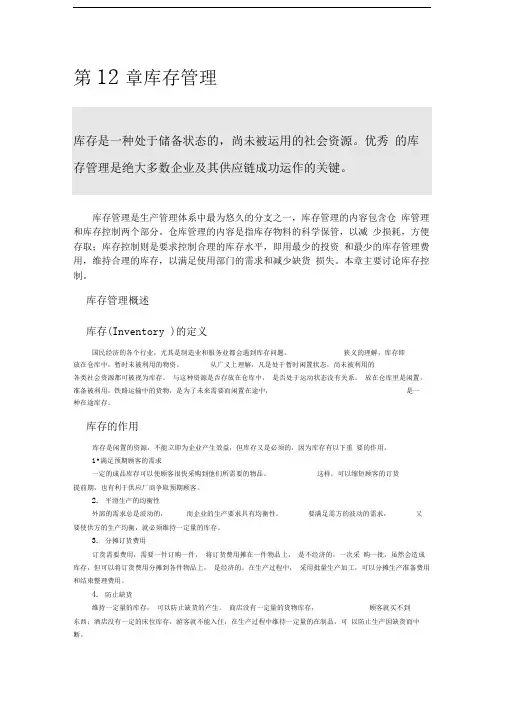
第12章库存管理库存管理是生产管理体系中最为悠久的分支之一,库存管理的内容包含仓库管理和库存控制两个部分。
仓库管理的内容是指库存物料的科学保管,以减少损耗,方便存取;库存控制则是要求控制合理的库存水平,即用最少的投资和最少的库存管理费用,维持合理的库存,以满足使用部门的需求和减少缺货损失。
本章主要讨论库存控制。
库存管理概述库存(Inventory )的定义国民经济的各个行业,尤其是制造业和服务业都会遇到库存问题。
狭义的理解,库存即放在仓库中,暂时未被利用的物资。
从广义上理解,凡是处于暂时闲置状态,尚未被利用的各类社会资源都可被视为库存。
与这种资源是否存放在仓库中,是否处于运动状态没有关系。
放在仓库里是闲置,准备被利用,铁路运输中的货物,是为了未来需要而闲置在途中,是一种在途库存。
库存的作用库存是闲置的资源,不能立即为企业产生效益,但库存又是必须的,因为库存有以下重要的作用。
1•满足预期顾客的需求一定的成品库存可以使顾客很快采购到他们所需要的物品。
这样,可以缩短顾客的订货提前期,也有利于供应厂商争取预期顾客。
2.平滑生产的均衡性外部的需求总是波动的,而企业的生产要求具有均衡性。
要满足需方的波动的需求,又要使供方的生产均衡,就必须维持一定量的库存。
3.分摊订货费用订货需要费用,需要一件订购一件,将订货费用摊在一件物品上,是不经济的。
一次采购一批,虽然会造成库存,但可以将订货费用分摊到各件物品上,是经济的。
在生产过程中,采用批量生产加工,可以分摊生产准备费用和结束整理费用。
4.防止缺货维持一定量的库存,可以防止缺货的产生。
商店没有一定量的货物库存,顾客就买不到东西;酒店没有一定的床位库存,游客就不能入住;在生产过程中维持一定量的在制品,可以防止生产因缺货而中断。
5. 避免价格上涨企业对有涨价可能性的物资会加大库存量,也会通过加大订货量以获取数量折扣。
库存具有重要的作用,但也有其不利的一面。
库存要占用资金,物资的库存要修建仓库;要维持库存物品不损耗、不老化,都需要大量支出。
第12章库存管理库存管理是生产管理体系中最为悠久的分支之一,库存管理的内容包含仓库管理和库存控制两个部分。
仓库管理的内容是指库存物料的科学保管,以减少损耗,方便存取;库存控制则是要求控制合理的库存水平,即用最少的投资和最少的库存管理费用,维持合理的库存,以满足使用部门的需求和减少缺货损失。
本章主要讨论库存控制。
库存管理概述库存(Inventory)的定义国民经济的各个行业,尤其是制造业和服务业都会遇到库存问题。
狭义的理解,库存即放在仓库中,暂时未被利用的物资。
从广义上理解,凡是处于暂时闲置状态,尚未被利用的各类社会资源都可被视为库存。
与这种资源是否存放在仓库中,是否处于运动状态没有关系。
放在仓库里是闲置,准备被利用,铁路运输中的货物,是为了未来需要而闲置在途中,是一种在途库存。
库存的作用库存是闲置的资源,不能立即为企业产生效益,但库存又是必须的,因为库存有以下重要的作用。
1. 满足预期顾客的需求一定的成品库存可以使顾客很快采购到他们所需要的物品。
这样,可以缩短顾客的订货提前期,也有利于供应厂商争取预期顾客。
2. 平滑生产的均衡性外部的需求总是波动的,而企业的生产要求具有均衡性。
要满足需方的波动的需求,又要使供方的生产均衡,就必须维持一定量的库存。
3. 分摊订货费用订货需要费用,需要一件订购一件,将订货费用摊在一件物品上,是不经济的。
一次采购一批,虽然会造成库存,但可以将订货费用分摊到各件物品上,是经济的。
在生产过程中,采用批量生产加工,可以分摊生产准备费用和结束整理费用。
4. 防止缺货维持一定量的库存,可以防止缺货的产生。
商店没有一定量的货物库存,顾客就买不到东西;酒店没有一定的床位库存,游客就不能入住;在生产过程中维持一定量的在制品,可以防止生产因缺货而中断。
5. 避免价格上涨企业对有涨价可能性的物资会加大库存量,也会通过加大订货量以获取数量折扣。
库存具有重要的作用,但也有其不利的一面。
库存要占用资金,物资的库存要修建仓库;要维持库存物品不损耗、不老化,都需要大量支出。
不仅如此,大量的库存还可能掩盖某些管理中的问题。
库存控制的目标1. “零库存”的境界“零库存”的观念在20世纪80年代成为一个流行的术语。
如果供应部门能够紧随需求的变化,在数量上和品种上都可以及时供应所需物资,即实现供需同步。
那幺,库存就可以取消,即达到“零库存”。
有一项统计反映,美国拥有的存货价值超过6500亿美元,这些存货由于这种或那种原因存放在仓库里,如果能将其中的一半解放出来用于投资,按比较保守的10%的收益率计算,将有325亿美元的年收入。
因此,企业经营者将减少库存作为一种潜在的资本来源,将“零库存”作为一种追求,就不足为怪了。
但由于需求的变化往往随机发生,难以预测,完全实现供需同步是不易做到的,而且由于供应部门、运输部门的工作也会不时出现某些故障,使完全的“零库存”只能是一种理想的境界。
2. 库存控制的目标现代管理要求在充分发挥库存功能的同时,尽可能地降低库存成本。
这是库存控制的基本目标。
库存控制应实现:(1)保障生产供应库存的基本功能是保证生产活动的正常进行,保证企业经常维持适度的库存,避免因供应不足而出现非计划性的生产间断。
这是传统库存控制的主要目标之一。
现代的库存控制理论虽然对此提出了一些不同的看法,但保障生产供应仍然是库存控制的主要任务。
(2)控制生产系统的工作状态一个精心设计的生产系统,均存在一个正常的工作状态,此时,生产按部就班地有序进行。
生产系统中的库存情况,特别是在制品的数量,与该系统所设定的在制品定额相近。
反之,如果一个生产系统的库存失控,该生产系统也很难处于正常的工作状态。
因此,现代库存管理理论将库存控制与生产控制结合为一体,通过对库存情况的监控,达到生产系统整体控制的目的。
(3)降低生产成本控制生产成本是生产管理的重要工作之一。
无论是生产过程中的物资消耗,还是生产过程中的流动资金占用,均与生产系统的库存控制有关。
在工业生产中,库存资金常占企业流动资金的60%-80%,物资的消耗常占产品总成本的50%-70%。
因此,必须通过有效的库存控制方法,使企业在保障生产的同时,减少库存量,提高库存物资的周转率。
库存ABC管理企业的库存物资种类繁多,对企业的全部库存物资进行管理是一项复杂而繁重的工作。
如果管理者对所有的库存物资均匀地使用精力,必然会使其有限的精力过于分散,只能进行粗放式的库存管理,使管理的效率低下。
因此,在库存控制工作中,应强调重点管理的原则,把管理的重心放在重点物资上,以提高管理的效率。
ABC分析法便是库存控制中常用的一种重点控制法。
ABC分析法的基本思想意大利经济学家帕累托(Vilpredo Pareto_)在调查19世纪意大利城市米兰的社会财富分配状况时发现,米兰市社会财富的80%被占人口20%的少数人占有,而占人口80%的多数人,仅占有社会财富的20%。
帕累托把其统计结果,按从富有到贫穷的顺序排列,绘制成管理界所熟知的帕累托图(如下图)。
后来,发现类似于帕累托图所显示的分布不均匀的统计现象,不仅存在于社会财富的分布上,而且普遍存在于社会经济生活的许多方面。
即所谓的20-80律,也有简称为2-8律的。
ABC分析法基于20-80律,即20%左右的因素占有(带来)80%左右的成果。
如,在超市中,占品种数20%左右的商品为企业带来了80%左右的销售额,20%左右的员工为企业作出了80%左右的贡献等。
图帕累托图库存管理的ABC分析法还在20-80律的指导下,分析企业的库存,以找出占有大量资金的少数物资,并加强对它们的控制。
这样,可以只用20%左右的精力就控制了80%左右的库存资金的管理。
而对那些只占少量资金的多数物资,则施以较轻松的控制和管理。
ABC分析法把企业占用65%-80%价值,而品种数仅为15%-20%的物资划为A类;把占用了15%―20%价值,品种数为30%-40%的物资划为B类;把占用了5%-15%价值,品种数为40%-55%的物资划为C类。
对ABC各类物资采用不同的管理方式,增强管理的针对性。
达到简化管理程序,提高管理效率的目的。
ABC分析法的实施实施ABC分析法的具体步骤:1. 根据企业的库存物资信息,计算各库存物资占用资金情况。
具体做法是把每一种物资的年使用量乘上单价。
年使用量可以根据历史资料或本年预测数据来确定。
为更好地反映现状,一般使用预测数据。
2. 把各库存物资按资金占用情况,从多到少的顺序排列,并计算出各库存物资占用资金的比例。
(见表)表浦光机器厂2004年库存物资资金占用统计表物资代码年使用量单价(元)年资金占用量(万元)资金占用比例(%)K-8400件20000800 S-12500件10000500 S-82000件6001203. 分析各库存物资占用资金情况,将各物资归入相应的类别,完成分类。
表是对表的数据进行分类处理后的结果。
表浦光机器厂2004年库存物资ABC分类汇总表ABC分析法的运用对库存物资进行ABC 分类后,企业可以对不同类别的物资采用不同的控制策略。
1. A类物资是控制的重点。
,应该严格控制其库存储备量、订货数量、订货时间。
在保证需求的前提下,尽可能减少库存,节约流动资金。
2. B类物资可以适当控制,在力所能及的范围内,适度地减少B类库存。
3. C类物资可以简单控制,增加订货量,加大两次订货期间的时间间隔,在不影响库存控制整体效果的同时,减少库存管理工作的工作量。
需要注意的是,在实际的库存物资分类工作中,在考虑到资金占用情况的同时,要兼顾供货和物资重要程度等因素。
一些特别关键或供应较难保障的物资,虽然占用资金不多,但需要按A类物资对待。
沃尔玛为师。
沃尔玛花4-6周的时间进行库存的准备工作,公司的内部审计部门提前45天给每个分店下达库存指南,内容包括库存管理的各项具体要求以及13项业务流程。
沃尔玛的库存管理小组有18-40名成员,由盘点员和公司运行部门、损失预防部门和内部审计部门的代表组成。
沃尔玛的各分店一般在上午8点到下午6点之间做好库存记录,库存记录填写完毕之后,盘点小组立即盘点,并将盘点结果与库存记录进行比较,根据盘点结果来修正库存记录,最后由公司内部审计部门复审所有物资每11-13个月彻底盘点1次,大部分盘点在3-9月份进行。
彻底盘点一般不在11月份和12月份进行,因为这时盘点会干扰大家过圣诞节;也不在1月份的第1周进行,因为这时员工还没完全进入工作状态,他们正忙于互致问候与互赠礼品。
沃尔玛的库存年周转次(同行竞争者的年平均周转次数为次),所有分店销售的产品的品种在6万-9万种之间。
从这些数字可以看出,沃尔玛的库存管理工作做起来不是那幺容易。
沃尔玛在两次盘点之间采用一个专门的连续系统来记录商品售出时间、售出商品的成本和数量。
这样,每个盘点期之后所售商品的成本与数量都能准确地统计,同时也能知道任何时候手中现货的成本和数量。
资料来源:. “Inventory on a Grand Scale,” Supermarket Business, February 1997 . Reproduced with permission from Supermarket Business.库存控制模型物资储存模型和经济订购批量的制定1. 无保险储备的定量储存模型图是无保险储备的库存变化模型,从中可看出当时间为零时,储存量为Q,随着生产进行,物资陆续领出,库存成线性递减。
当库存量降到R时,采购人员就得以批量Q的数量去订购,并要求在时间T L内送到,以保证生产的进行。
现在的问题是如何来确定订购批量Q,使总费用最省图无保险储备的定量储存模型。
设A 为该物资全年需要量,M 为物资单价,C 为单位物资全年持有费用,P 为每次订购费用。
因库存量在Q 与零之间均匀变动,则其理论上的库存量平均值为2Q。
于是,全年持有费用为2QC 。
全年订购费用应为每年订购次数Q A 与P 的乘积。
全年物资费用为AM ,则全年总费用T 为T=AM QAP 2CQ ++ 式中:AM 为全年固定的物资费用QAP2CQ +为全年可变费用 可变费用的大小随着Q 的变化而变化。
式中C 、P 、A 、M 都是常量,故T 实际上只是Q的函数。
现要知Q 为多少才能使T 最小,这可用求极小值的方法求得。
即令:0Q AP2C dQ dT 2=-= 得Q=C2AP再求二次导数:0Q2APdQ T d 322>= 因而求得经济批量(简称EOQ )Q 0为:Q 0=Q2AP因此,只要知道A 、P 、C 三个数值,即可算出Q 0。
[例1] 某厂每年需某种零件4,000件,该零件单价10元,每只零件每年的持有费用为5元,每次订购费用为100元,求经济批量Q 0。